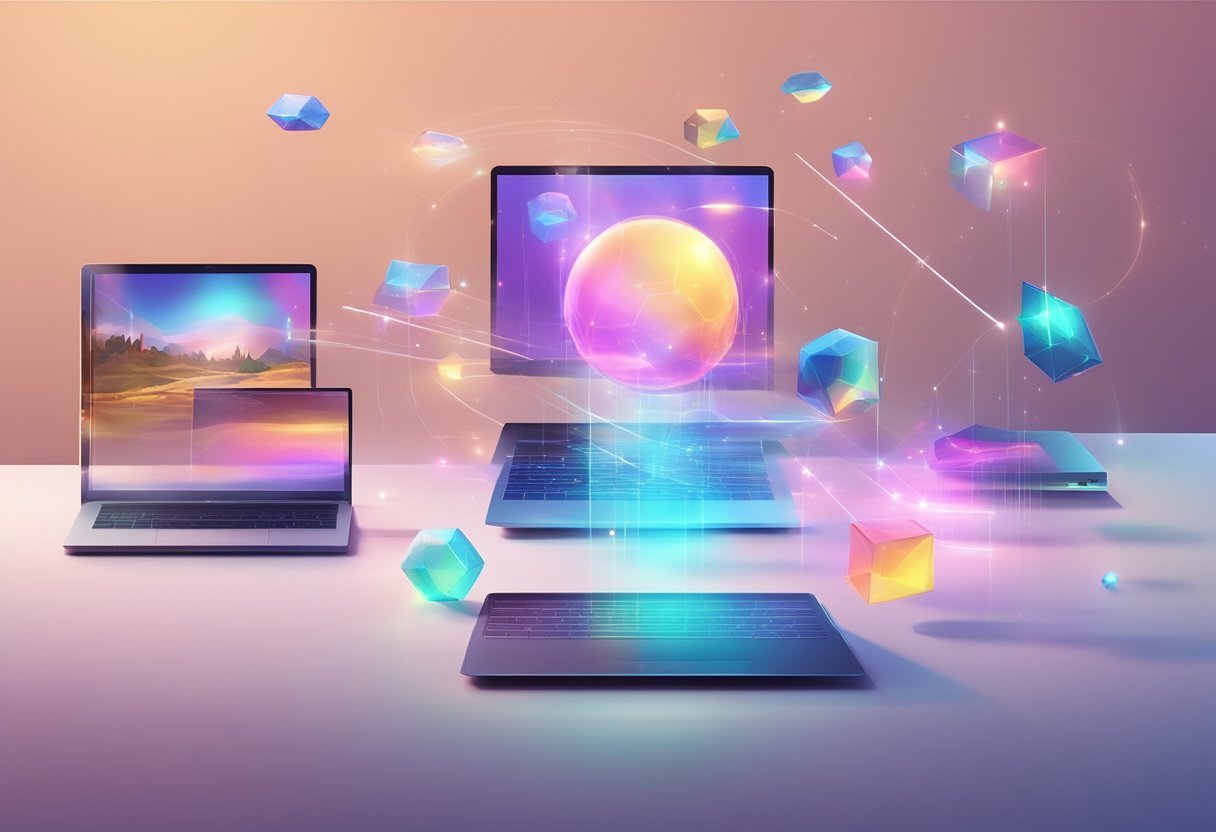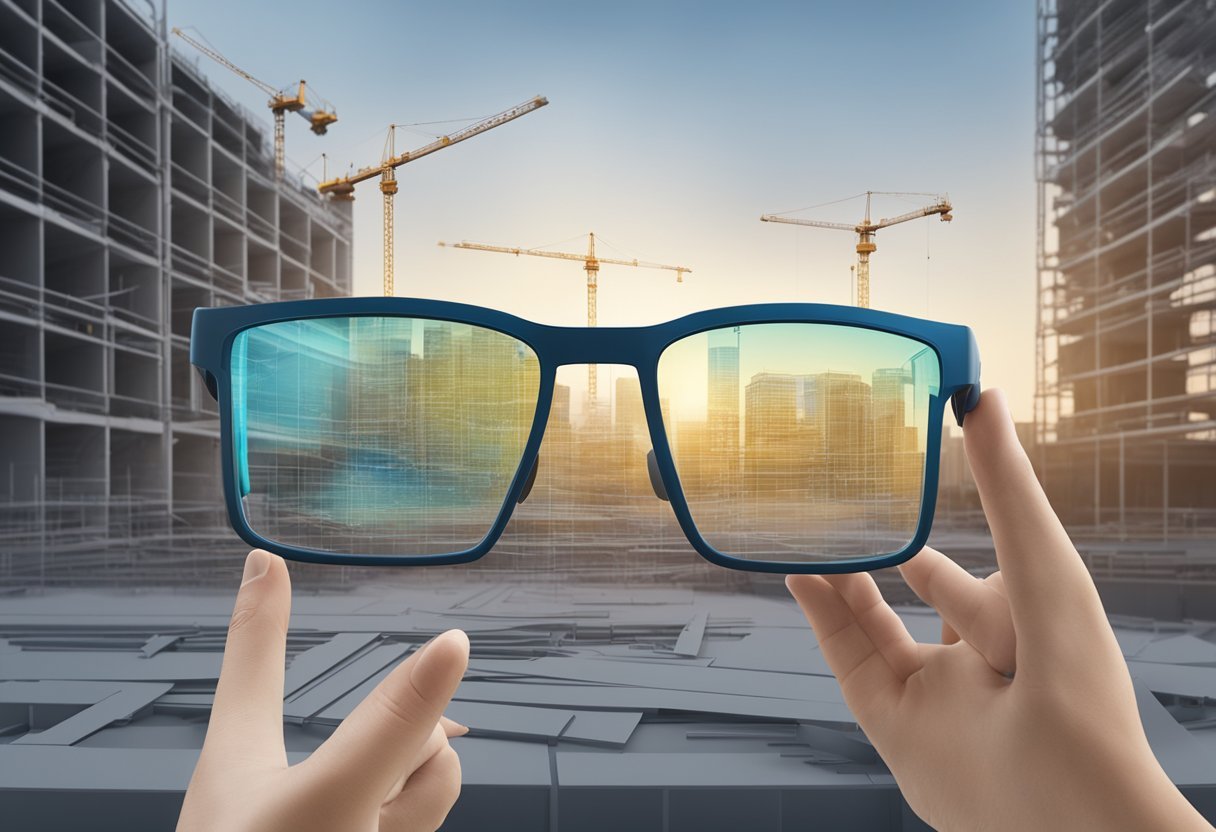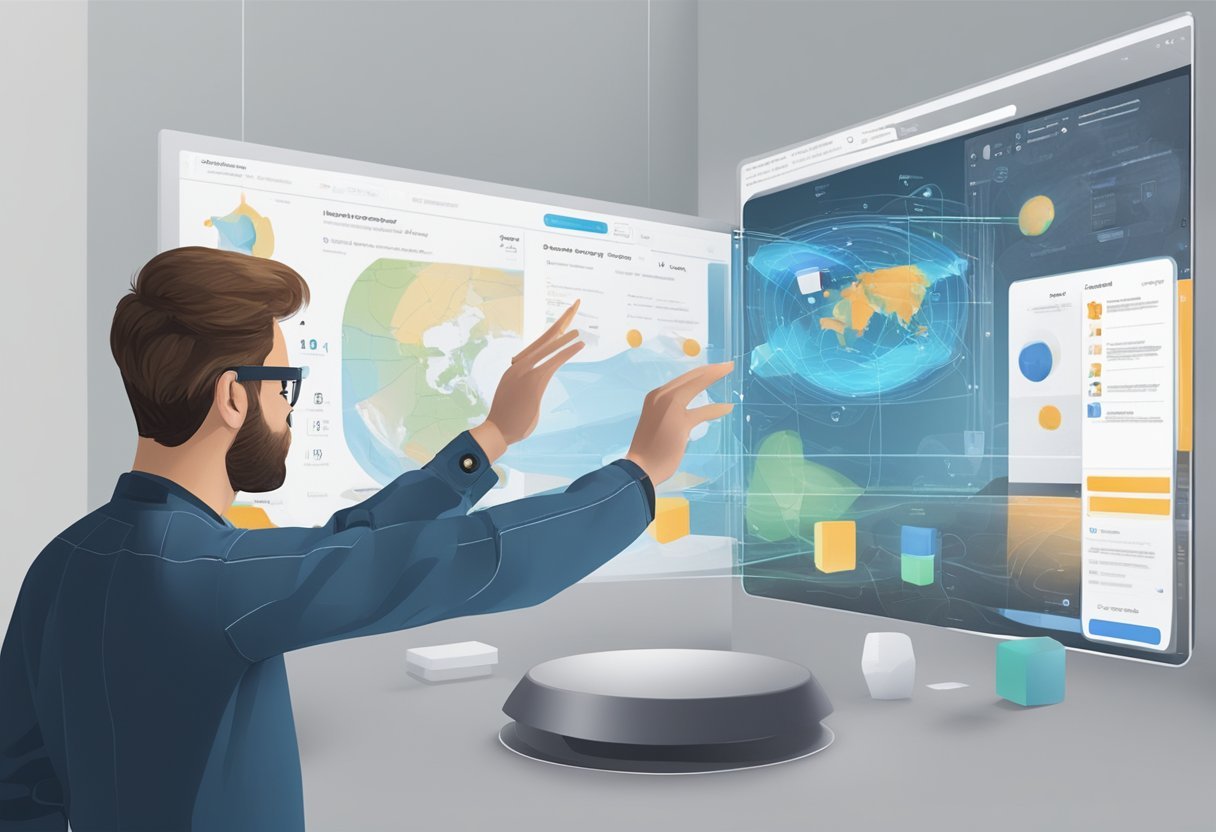Augmented Reality (AR) and Mixed Reality (MR) are two terms that are often used interchangeably, but they are not the same thing. Both AR and MR are types of immersive technologies that merge digital and physical worlds, but the way they do it is different. In this blog post, we will compare and contrast augmented reality vs mixed reality to help you understand the differences and similarities.
AR overlays digital content onto the real world, enhancing the user’s perception of reality. For example, an AR app might allow users to see virtual furniture in their actual living room, or provide information about a landmark when viewed through a smartphone camera. MR, on the other hand, combines virtual and physical objects in a way that they interact with each other. MR allows users to manipulate and interact with virtual objects in the real world.
Defining Augmented Reality and Mixed Reality
Core Concepts of AR
Augmented Reality (AR) is a technology that superimposes digital elements on the physical world, providing an enhanced perception of the environment. AR is often used in mobile apps, where a camera is used to capture the real world, and digital elements are added to it. AR is a subset of Extended Reality (XR), which includes Virtual Reality (VR) and Mixed Reality (MR).
Core Concepts of MR
Mixed Reality (MR) is a technology that blends the physical and digital worlds, creating an immersive experience that is not possible with AR or VR alone. MR uses a combination of sensors, cameras, and displays to create a seamless integration of the digital and physical worlds. In MR, digital elements are anchored to the physical world, and users can interact with them in real-time.
Augmented reality vs mixed reality
The main difference between AR and MR is the level of immersion. AR overlays digital elements on the physical world, while MR blends the physical and digital worlds, creating a new reality. AR is often used for informational purposes, while MR is used for interactive experiences. In AR, digital elements are not anchored to the physical world, while in MR, they are.
AR and MR are technologies that enhance our perception of the world by superimposing digital elements on the physical environment. MR provides a more immersive experience than AR, as it blends the physical and digital worlds.
Below is a comparison table showcasing the difference between augmented reality vs mixed reality:
| Feature | Augmented Reality (AR) | Mixed Reality (MR) |
|---|---|---|
| Definition | Overlays digital content on the real world but does not interact with it. | Blends digital content with the real world, allowing interaction between both. |
| Interaction with Reality | Limited interaction; digital objects are not anchored to the real world. | High level of interaction; digital objects can interact with the real world. |
| Devices Used | Smartphones, tablets, AR glasses. | Specialized MR headsets like Microsoft HoloLens, Magic Leap. |
| Immersion Level | Partial immersion; users still primarily perceive the real environment. | Deeper immersion; users perceive a blend of real and digital environments. |
| Use Cases | Information overlay, marketing, education, navigation. | Design, engineering, advanced training simulations, remote collaboration. |
| Environmental Integration | Digital content does not adapt or respond to changes in the real environment. | Digital content adapts to and is spatially aware of the physical environment. |
| Technology | Basic spatial awareness, image recognition. | Advanced spatial mapping, environment understanding, gesture and voice recognition. |
| Market Maturity | More widespread and accessible; available on most modern smartphones. | Less widespread; requires more advanced and expensive hardware. |
| Development Tools | ARKit (iOS), ARCore (Android), Vuforia. | Unity with Mixed Reality Toolkit, Unreal Engine with HoloLens support, Vuforia. |
Technological Foundations
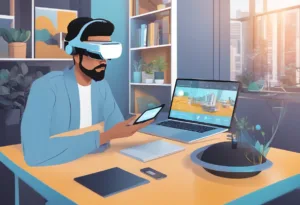
Hardware Components
Augmented Reality (AR) and Mixed Reality (MR) are immersive technologies that require specific hardware components to function properly. The most common hardware components used in AR and MR include headsets, smart glasses, cameras, and devices like smartphones, tablets, and PCs.
AR headsets like Microsoft HoloLens and Google Glass are equipped with cameras and sensors that detect the user’s environment and overlay digital content onto the real world. On the other hand, MR headsets like Meta Quest Pro and Microsoft HoloLens 2 use advanced sensors and cameras to create a more immersive experience by allowing the user to interact with digital objects in a realistic way.
Smart glasses like Google Glass and Vuzix Blade are designed to be worn like regular glasses and project digital information onto the user’s field of view. They are lightweight and portable, making them ideal for use in industrial and medical settings.
Software Frameworks
AR and MR applications are built using software frameworks like ARKit and ARCore, which provide developers with tools to create interactive and engaging experiences. These frameworks use computer vision algorithms to detect and track real-world objects and surfaces, allowing digital content to be overlaid onto the user’s environment in real-time.
Virtual Reality (VR) headsets like Oculus Rift and HTC Vive use a different set of software frameworks to create immersive experiences. These headsets are designed to completely immerse the user in a virtual environment, blocking out the real world entirely.
AR and MR technologies rely on a combination of hardware components and software frameworks to create immersive experiences. While AR is focused on overlaying digital content onto the real world, MR takes things a step further by allowing users to interact with digital objects in a realistic way.
User Experience and Interaction
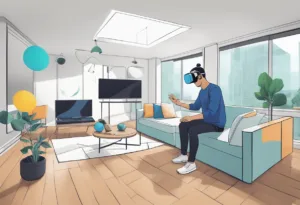
Interaction Design
When it comes to designing for augmented reality or mixed reality, the interaction design plays a crucial role in creating an immersive and interactive experience. The UX designer must consider how users will interact with the virtual content and how it will integrate with the real world. The designer needs to create a seamless connection between the digital and physical world to provide a smooth experience for the user.
In augmented reality, the digital content and the real world exist alongside each other but do not interact. In contrast, mixed reality allows for the digital content to interact with the real world, creating a more immersive experience. The interaction design for mixed reality must account for this added layer of interactivity.
Sensory Engagement
Creating a sense of presence is essential in both augmented reality and mixed reality. The user must feel like they are part of the environment, and the virtual content must seamlessly blend with the real world. Sensory engagement plays a significant role in creating this sense of presence.
In augmented reality, the user can see and hear the virtual content, but there is no physical interaction. Mixed reality, on the other hand, allows for physical interaction with the virtual content, creating a more immersive experience. The user can touch, move, and manipulate the virtual objects as if they were real.
The sensory engagement in mixed reality is more complex than in augmented reality. The user can interact with the virtual content in a simulated environment, which requires a higher level of sensory engagement. The UX designer must create an experience that engages all the senses to create a truly immersive experience.
The interaction design and sensory engagement are crucial components of creating an immersive and interactive experience in augmented reality and mixed reality. The UX designer must consider how the user will interact with the virtual content and how it will integrate with the real world to create a seamless and engaging experience.
Applications and Use Cases
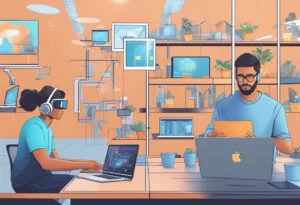
Gaming and Entertainment
Augmented reality (AR) and mixed reality (MR) have revolutionized the gaming and entertainment industry. AR and MR technologies have provided users with an immersive experience that blurs the line between the digital and physical world. The AR and MR technologies have been used in gaming, movies, TV shows, and film. The AR and MR technologies have been used in console gaming, flight simulators, and other gaming platforms.
Healthcare and Training
AR and MR technologies have also found their way into the healthcare and training industry. The technologies have been used to enhance medical training and education. The AR and MR technologies have been used to simulate surgeries, procedures, and other medical operations. The technologies have also been used to train pilots, astronauts, and other professionals who require simulation training. The technologies have been used to enhance productivity, collaboration, and learning.
Business and Industry
AR and MR technologies have been adopted by various industries to enhance productivity, collaboration, and communication. The technologies have been used to provide remote assistance, virtual tours, and remote collaboration. The technologies have been used to enhance the productivity of employees in various industries. The AR and MR technologies have been used in manufacturing, construction, and other industries to provide real-time data and information to employees. The technologies have also been used to enhance the communication between employees and customers.
AR and MR technologies have been adopted by various industries to enhance productivity, collaboration, and communication. The technologies have been used in gaming, healthcare, training, business, and other industries to provide an immersive experience that blurs the line between the digital and physical world.
Market Impact and Industry Adoption
Consumer Electronics
Augmented reality (AR) and mixed reality (MR) are two technologies that have the potential to change the way we interact with the world around us. The market impact and industry adoption of these technologies are significant, with both expected to grow at a rapid pace in the coming years.
According to a report by Grand View Research, the global augmented reality market size was valued at USD 38.56 billion in 2022 and is expected to grow at a compound annual growth rate (CAGR) of 39.8% from 2023 to 2030. Similarly, the mixed reality market is expected to register a CAGR of 43.28% over the forecast period, according to another report by Market Research Future.
Tech companies such as Microsoft, Google, and Apple have invested heavily in these technologies, with Microsoft’s HoloLens and Google’s Glass being notable examples. The adoption of AR and MR in consumer electronics has been slow, but with the release of new smartphones and headsets that support these technologies, the market is expected to grow rapidly.
Enterprise Solutions
The adoption of AR and MR in enterprise solutions has been more significant than in consumer electronics. Industries such as healthcare, manufacturing, and engineering have already started using these technologies to improve productivity and reduce costs.
AR and MR are being used to train technicians and engineers, allowing them to learn new skills and procedures without the need for physical equipment. This not only reduces costs but also improves safety by allowing workers to practice in a virtual environment.
According to a report by IDC, the global spending on AR and VR in enterprise solutions is expected to reach USD 18.8 billion in 2020. Tech companies such as Qualcomm and Intel are also investing heavily in these technologies, with Qualcomm’s Snapdragon XR2 platform being a notable example.
The market impact and industry adoption of AR and MR are significant, with both expected to grow rapidly in the coming years. The adoption of these technologies in consumer electronics is expected to increase with the release of new smartphones and headsets, while the adoption in enterprise solutions is already significant and expected to grow further.
Future Prospects
Advancements in Technology
The future of augmented reality (AR) and mixed reality (MR) is bright, with the potential for significant technological advancements in the coming years. With the rise of virtual worlds and the metaverse, there is an increasing demand for immersive and interactive experiences, which AR and MR can provide.
One significant area of development is the use of artificial intelligence (AI) in AR and MR. AI can improve the accuracy of image recognition and tracking, making AR and MR experiences more seamless and realistic. A dvancements in hardware, such as the development of lightweight and more powerful headsets, will further enhance the user experience.
Another area of focus is the integration of AR and MR with the digital world, allowing users to seamlessly switch between the physical and virtual worlds. This integration has the potential to revolutionize the way we interact with technology, enabling us to access information and experiences in new and innovative ways.
Potential for Growth
The potential for growth in the AR and MR market is significant, with projections estimating that the market will reach $198 billion by 2025. This growth is driven by the increasing demand for immersive and interactive experiences, as well as the development of new and innovative applications for AR and MR technology.
One area of growth is in the enterprise market, where AR and MR are being used to improve productivity and efficiency in a variety of industries. For example, AR and MR are being used in manufacturing to provide workers with real-time information and instructions, improving the speed and accuracy of production.
Another area of growth is in the consumer market, where AR and MR are being used for entertainment and gaming. With the rise of virtual worlds and the metaverse, there is a growing demand for immersive and interactive experiences that AR and MR can provide.
The future of AR and MR is bright, with the potential for significant technological advancements and growth in the market. As hardware and software continue to improve, and new and innovative applications are developed, it is likely that AR and MR will become an increasingly important part of our daily lives.
Challenges and Limitations
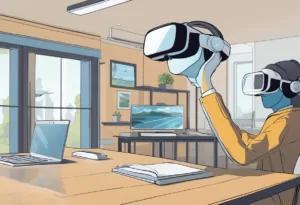
Technical Challenges
One of the biggest technical challenges in the development of both augmented reality (AR) and mixed reality (MR) is ensuring that the technology is affordable and accessible to a wide range of users. This can involve overcoming technical barriers such as the need for high-quality cameras and sensors, as well as the need for powerful processors and graphics cards to handle the complex visualizations required by these technologies.
Another challenge is ensuring the safety of users while using AR and MR technologies. This includes ensuring that the technology does not cause physical harm to users, as well as preventing users from becoming disoriented or dizzy while using the technology. In addition, privacy concerns may arise when using AR and MR technologies, as users may be concerned about the collection and use of their personal data.
User Adoption
User adoption is another major challenge facing the widespread use of AR and MR technologies. While these technologies have the potential to revolutionize many industries, including gaming, education, and healthcare, many users may be hesitant to adopt them due to concerns about limitations and barriers to acceptance.
One of the main limitations of AR and MR technologies is the need for users to wear specialized headsets or other equipment in order to experience the technology. This can be a barrier to adoption for some users, as they may be uncomfortable wearing this equipment or may not have access to it.
Another barrier to acceptance is the need for users to learn how to use the technology effectively. This can involve overcoming technical challenges such as ensuring that the technology is compatible with their existing hardware and software, as well as learning how to operate the technology effectively.
Frequently Asked Questions
What are the key distinctions between augmented reality (AR) and mixed reality (MR)?
Augmented reality (AR) and mixed reality (MR) are both technologies that superimpose digital information onto the real world. However, the key difference between the two is the level of immersion. AR overlays digital elements onto the real world, while MR merges digital and physical elements to create a new environment. In other words, MR allows users to interact with digital objects as if they were real.
Can you give examples of how AR and MR are used differently in practical applications?
AR is commonly used in mobile apps, such as Snapchat filters and Pokémon Go, where digital elements are overlaid onto the real world. On the other hand, MR is used in industries such as manufacturing, healthcare, and education, where users can interact with digital objects in a physical space. For example, a surgeon can use MR to visualize a patient’s anatomy during surgery, or a student can use MR to explore a virtual museum exhibit.
How do AR, MR, and virtual reality (VR) differ in terms of user experience and immersion?
AR and MR both allow users to interact with digital elements in the real world, but the level of immersion is different. AR is less immersive than MR, as it only overlays digital elements onto the real world. VR, on the other hand, completely immerses users in a digital environment and blocks out the real world.
What are some real-world examples where mixed reality technology is currently being implemented?
Mixed reality technology is currently being used in various industries, such as manufacturing, healthcare, and education. For example, the HoloLens 2, a mixed reality headset developed by Microsoft, is being used in manufacturing to help workers visualize and interact with digital models of products. In healthcare, MR is being used to help surgeons visualize and plan surgeries, and in education, MR is being used to create interactive learning experiences for students.
In what ways does mixed reality enhance or build upon the capabilities of augmented reality?
Mixed reality enhances the capabilities of augmented reality by allowing users to interact with digital objects in a physical space. MR merges digital and physical elements to create a new environment, which allows for a more immersive and interactive experience. MR can provide users with more context and information than AR, as it allows for a deeper understanding of the relationships between digital and physical objects.
What are the three main types of augmented reality, and how do they relate to mixed reality?
The three main types of augmented reality are marker-based AR, markerless AR, and projection-based AR. Marker-based AR uses a physical marker, such as a QR code, to trigger the overlay of digital elements onto the real world. Markerless AR uses computer vision to detect and track real-world objects, and projection-based AR projects digital elements onto real-world surfaces. These types of AR relate to mixed reality in that they all involve the overlay of digital elements onto the real world, but they do not involve the merging of digital and physical elements in the same way that MR does.


